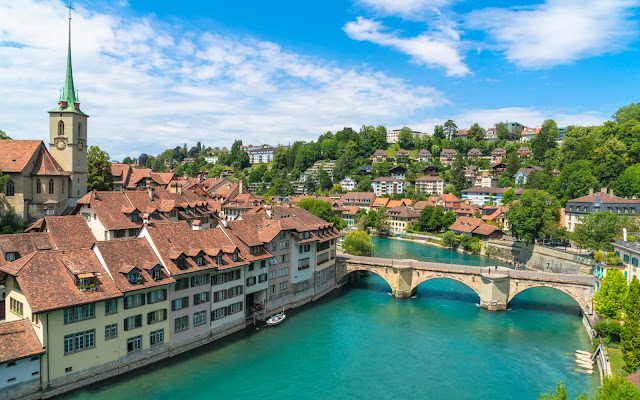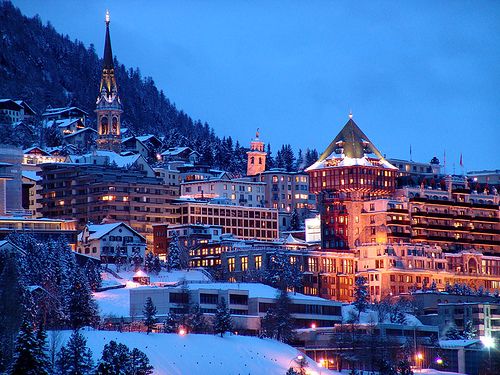Tourism in switzerland
Tourists are attracted by the diversity of the Swiss landscape as well as by the activities available, which take advantage of the climate and the Alpine landscape, especially for skiing and mountaineering. In 2016, tourism accounted for approximately 2.6% (CHF 16.8 billion) of Switzerland's gross domestic product, up from 2.6% (CHF 12.8 billion) in 2001.
Swiss currency
The Swiss central bank, the Swiss National Bank (SNB), issues Swiss franc bills, which come in six denominations: 10 francs, 20 francs, 50 francs, 100 francs, 200 francs and 1,000 francs. The Swiss franc is divided into 100 units, with one hundredth of the Swiss franc called Rappen (Rp.) in German, centimes (c.) in French, centesimo (ct.) in Italian and rap (rp.) in Romanian . Swiss franc coins are issued by the Federal Mint, called Swissmint, in seven denominations: 5 centimes, 10 centimes, 20 centimes, ½ franc, 1 franc, 2 francs, 5 francs.
The Swiss franc, ranked as the seventh most traded currency in the world, has gained popularity because it is a safe haven currency. As a result, many governments and financial institutions view the Swiss franc as a hedge against instability in many types of investments and markets.
Popular destinations in Switzerland
Switzerland is considered one of the best tourist countries for international tourists. It also features many tourist destinations and we will give you the best....
Zurich
Cosmopolitan Water City combines creative city life with nature in all its splendor. Zurich is alive day and night with its myriad of events, varied museums, its own gastronomic festival and the liveliest nightlife in Switzerland. And if you are looking for rest and relaxation, you can be in the Swiss mountains in less than an hour.
Zurich is the center of economic and educational life in Switzerland. Located in the heart of Europe, the city offers all the modern conveniences of a cosmopolitan metropolis, without sacrificing its natural beauty. For years, Zurich has ranked among the world's best cities in terms of quality of life. It is a boutique city that offers everything that this implies, but in a small and exquisite format.
Zurich is the center of economic and educational life in Switzerland. Located in the heart of Europe, the city offers all the modern conveniences of a cosmopolitan metropolis, without sacrificing its natural beauty. For years, Zurich has ranked among the world's best cities in terms of quality of life. It is a boutique city that offers everything that this implies, but in a small and exquisite format.
Geneva
The shores of Lake Geneva have attracted visitors and invaders for millennia. Happy Geneva is a city built on the western shore of the lake, with majestic snow-capped mountains in the background. The city is easily visited on foot and you can rent a bike to venture out into the surrounding area. Don't miss the city's most beautiful sites, including the lakefront and its famous fountain, the flowering clock in the English Garden, St. Peter's Cathedral, the Reformers' Wall, Place Neuve and the birthplace of the United Nations.
Zermatt
Zermatt is located at the foot of the Matterhorn. The tourist development of the town is closely linked to what is probably the most famous mountain in the world. The vacation destination is a car-free zone, which has retained its original character and offers almost unlimited possibilities in terms of excursions.
Basel
The City of Culture for experts is home to 40 museums and has the highest percentage of museums in the country. Basel also has a beautiful old town, modern architecture and the Rhine - an attractive place to rest for a while.
Basel is a green city. The Botanical Garden, several parks and the banks of the Rhine are ideal places to relax and stay for a while. The Etoscha House at the zoo offers an incredible insight into the Namibian savannah.
Luzerne
Lucerne, the gateway to central Switzerland, is located on Lake Lucerne in an impressive mountainous landscape. With its attractive attractions, attractive range of shops, beautiful lakeside setting and excursion mountains near the Rigi, Pilatus and Stanserhorn, the city is a destination for many travel groups and individuals on their journey through Central Switzerland.
Historic houses decorated with frescoes line the city's picturesque squares, such as the Weinmarkt in the pedestrianized old town. Lucerne is a city of squares and churches. The 17th-century Jesuit church is the first sacred baroque building in Switzerland, and the twin towers of the Hofkirche are an integral part of the city's scene. A dying man carved into a rock in memory of the heroic death of Swiss guards killed during the attack on the Tuileries in 1792 is one of the most famous monuments in Switzerland. With its 112 meter Bourbaki Panorama, Lucerne has one of the few giant circular panels in the world.
Bern
Bern is the administrative capital of Switzerland and the fourth largest city in terms of population after Zurich, Geneva and Basel. About 127,000 people live in Bern, most of whom speak German or Bernese German. Bern is the capital of the canton of Bern, the second most populous canton in Switzerland. The average height of the city above sea level is 542 m and its area is about 52 km.
Berne est située sur le plateau suisse, dans la partie centre-ouest du pays. Les montagnes Gerten (858 m) et Bantiger (947 m) sont les montagnes les plus proches de la capitale. La ville a été construite sur la presqu'île formée par l'Aar, mais s'est rapidement développée en dehors des limites naturelles de la rivière, c'est pourquoi de nombreux ponts ont été construits sur l'Aar, comme le pont Kirchenfeld et le pont Needge.
Bern still retains its ancient medieval character and has been designated by UNESCO as a world cultural heritage site. Its most famous monuments are the elaborate medieval clock tower and the 15th century Minstar Gothic cathedral. The city has many distinguished theaters and museums, such as the Alpine Museum, the Einstein House, the Museum of Fine Arts, the Museum of Communications and the Museum of Psychology. Several festivals take place in Bern every year.
Sant Mortiz
St. Moritz is much more than a holiday resort. It was also the birthplace of winter tourism in the Alps (in 1864) and twice hosted the Winter Olympics. However, St. Moritz first became famous for its mineral springs, which were discovered 3,000 years ago and made the town a spa in early summer.
Saint-Moritz, qui se situe dans la haute Engadine, à une altitude de 1 856 mètres, bénéficie de nombreuses journées ensoleillées. C'est précisément ce soleil qui a été légalement protégé en tant que symbole de Saint-Moritz en 1930. Saint-Moritz est souvent en avance sur son temps - par exemple, la première lumière électrique a été lancée à Noël en 1878, le premier tournoi de golf alpin ici, en 1889 L'une des premières remontées mécaniques de Suisse a été mise en service en 1935.
Guests from all over the world enjoy the modern Alpine lifestyle, which includes first-class restaurants that can satisfy gourmets even on the slopes, hotels that set standards in all categories, and world-class events. Via Serlas guarantees good shopping in a small space, although you can also find local specialties such as the famous Engadine walnut pie on your doorstep.
Interlaken
Interlaken (German: Interlaken) is a municipality in the district of Interlaken-Oberhasley in the canton of Bern in Switzerland and is one of the best known tourist destinations in Bern.
Interlaken is located between Lake Brienz to the east and Lake Thun to the west in an area called Bodele. The city takes its name from its geographical location among the lakes. The river Aare flows through the city, connecting the two lakes. Interlaken is located at an altitude of 570 meters above sea level. Interlaken has an area, in 2009, of 4.3 square kilometers. 24.4 percent of this area is used for agricultural purposes, while forests constitute 22.6 percent of the area, and the remaining area is estimated at 45.8 percent between roads and buildings, and rivers and lakes constitute 7 percent of the total area, while unused land constitutes 0.2 percent.
Lausanne
Lausanne, the second largest city on Lake Geneva, has the dynamism of a business city while enjoying the ideal location of a holiday resort. The capital of the canton of Vaud is also a lively university town and a conference city. In the Olympic capital, sport and culture are written in gold letters.
Lugano
Ideally situated on a lake with the Alps in the background, lucky Lugano has a little bit of everything. Take the cable car up Monte San Salvator or Monte Prie to enjoy sunny panoramic views of the lake, rivers, mountains and red-roofed buildings. Explore the city's churches and cathedrals and the expressive and colorful Piazza della Reforma. Taste Ticino cuisine, explore the lake by boat or spend the day at the Lido with its Olympic-size pool.












